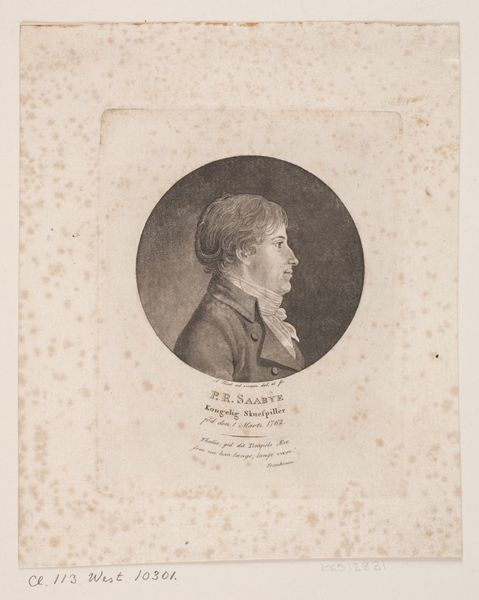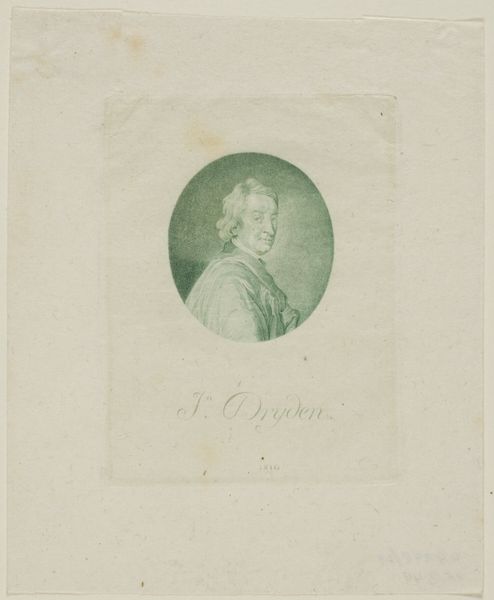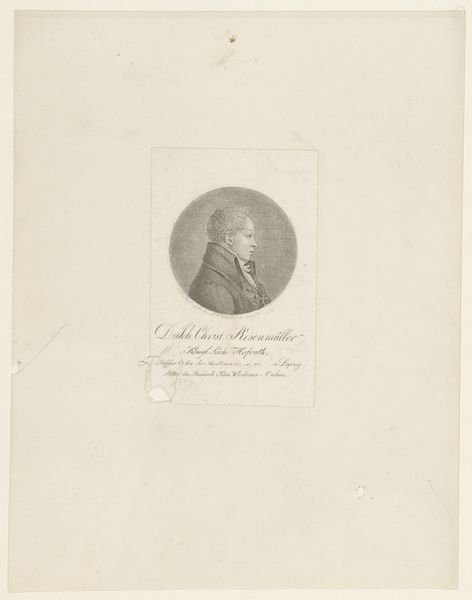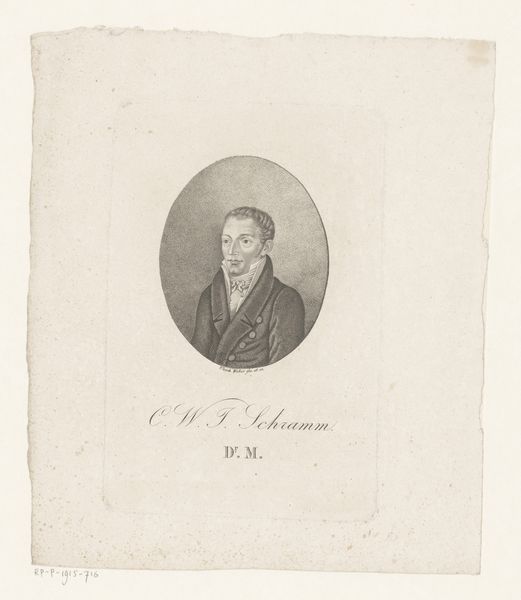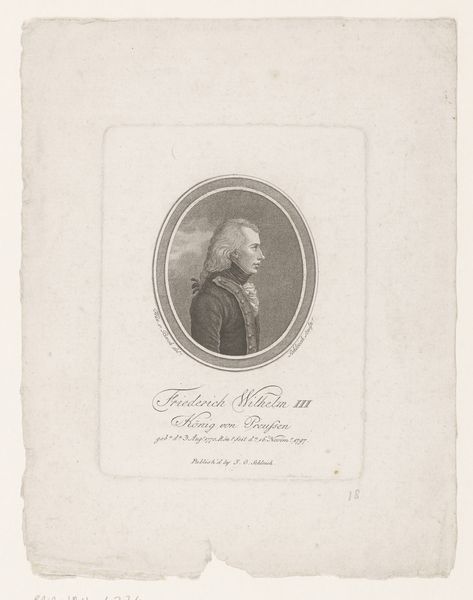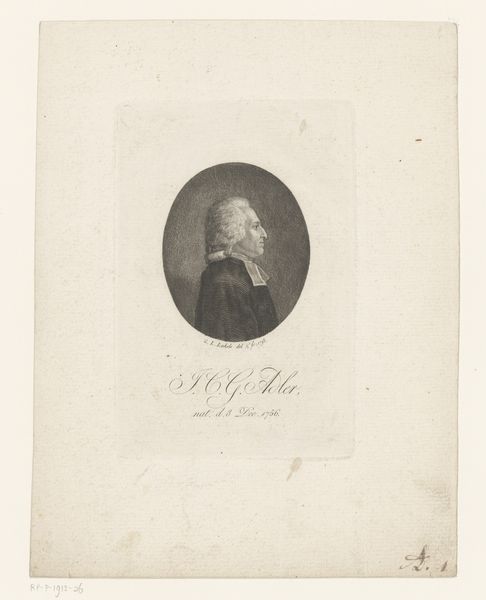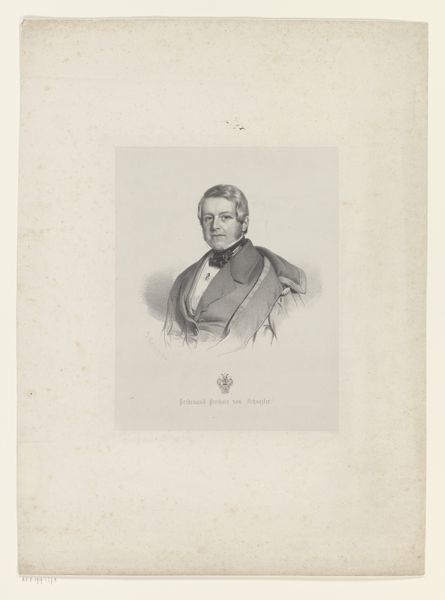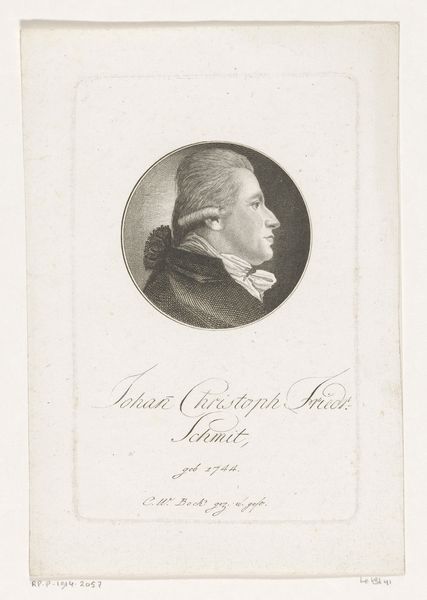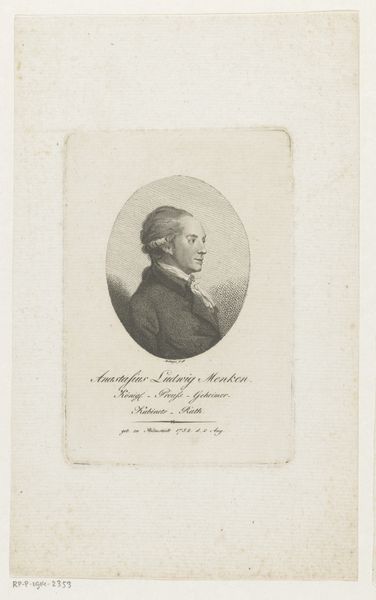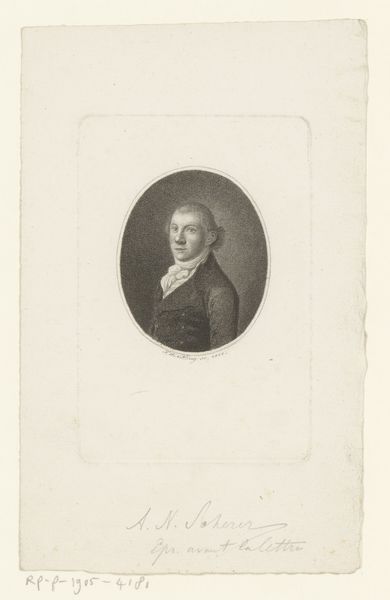
print, engraving
#
portrait
#
neoclacissism
# print
#
engraving
Dimensions: height 183 mm, width 115 mm
Copyright: Rijks Museum: Open Domain
Curator: J.S.L. Halle gives us "Portret van Helene Charlotte von Friedland," an engraving dating possibly from 1803 to 1849, rendered in the neoclassical style. Editor: My immediate impression is of serene detachment. The oval composition lends a sort of framed stillness to her gaze. It feels meticulously planned. Curator: Indeed. Halle masterfully uses line and shadow to sculpt the form within the tight constraints of the oval. Notice how the clean contour isolates her features—the long nose, pursed lips—while the clothing has more textural detail, more variation. Editor: She seems presented to us not so much as a person, but as a type, perhaps the stoic intellectual or noblewoman. The averted gaze, the simplicity of her dress, her rather severe hairstyle… these seem loaded with encoded cultural messages. What class anxieties might this reflect? Curator: Intriguing question! Visually, the artist focuses the line and stippling to enhance tonal gradation, producing subtle shifts from the pure white paper to near black values, specifically focusing on delineating her refined aristocratic status. Editor: I agree. The symbolic language of class is clear. But consider the larger frame. The empty space surrounding the image emphasizes her isolation, potentially a symbol for loneliness or a specific psychological attribute ascribed to aristocratic women during that era. Curator: That negative space definitely amplifies her presence and the image's monumentality; although print media can easily lend themselves to notions of the reproducible image, the fine line work makes this image feel carefully crafted and individual. Editor: Looking at this piece again through the lens of iconography, the figure reminds us how carefully constructed identities have always been; she shows us the performance of social roles that create an overall lasting image and idea of nobility. Curator: A powerful synthesis! Studying Halle’s neoclassical techniques, along with understanding historical context and representational strategies of nobility, yields more insightful ideas to ponder about this composition. Editor: Ultimately, I see this print as not only a portrait of a person, but also a symbol of an entire cultural era's ideals.
Comments
No comments
Be the first to comment and join the conversation on the ultimate creative platform.
